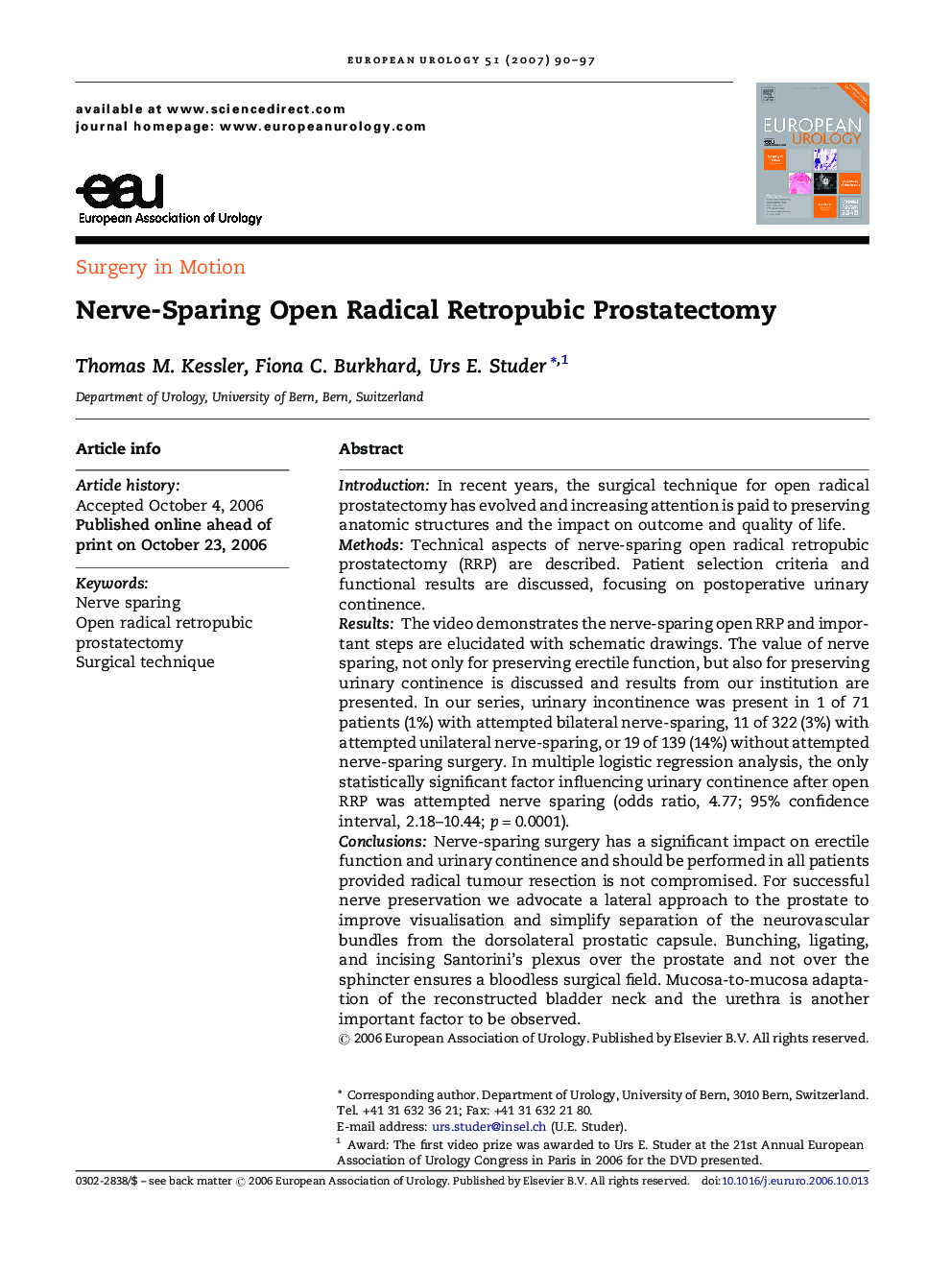| Article ID | Journal | Published Year | Pages | File Type |
|---|---|---|---|---|
| 3923420 | European Urology | 2007 | 8 Pages |
IntroductionIn recent years, the surgical technique for open radical prostatectomy has evolved and increasing attention is paid to preserving anatomic structures and the impact on outcome and quality of life.MethodsTechnical aspects of nerve-sparing open radical retropubic prostatectomy (RRP) are described. Patient selection criteria and functional results are discussed, focusing on postoperative urinary continence.ResultsThe video demonstrates the nerve-sparing open RRP and important steps are elucidated with schematic drawings. The value of nerve sparing, not only for preserving erectile function, but also for preserving urinary continence is discussed and results from our institution are presented. In our series, urinary incontinence was present in 1 of 71 patients (1%) with attempted bilateral nerve-sparing, 11 of 322 (3%) with attempted unilateral nerve-sparing, or 19 of 139 (14%) without attempted nerve-sparing surgery. In multiple logistic regression analysis, the only statistically significant factor influencing urinary continence after open RRP was attempted nerve sparing (odds ratio, 4.77; 95% confidence interval, 2.18–10.44; p = 0.0001).ConclusionsNerve-sparing surgery has a significant impact on erectile function and urinary continence and should be performed in all patients provided radical tumour resection is not compromised. For successful nerve preservation we advocate a lateral approach to the prostate to improve visualisation and simplify separation of the neurovascular bundles from the dorsolateral prostatic capsule. Bunching, ligating, and incising Santorini's plexus over the prostate and not over the sphincter ensures a bloodless surgical field. Mucosa-to-mucosa adaptation of the reconstructed bladder neck and the urethra is another important factor to be observed.
